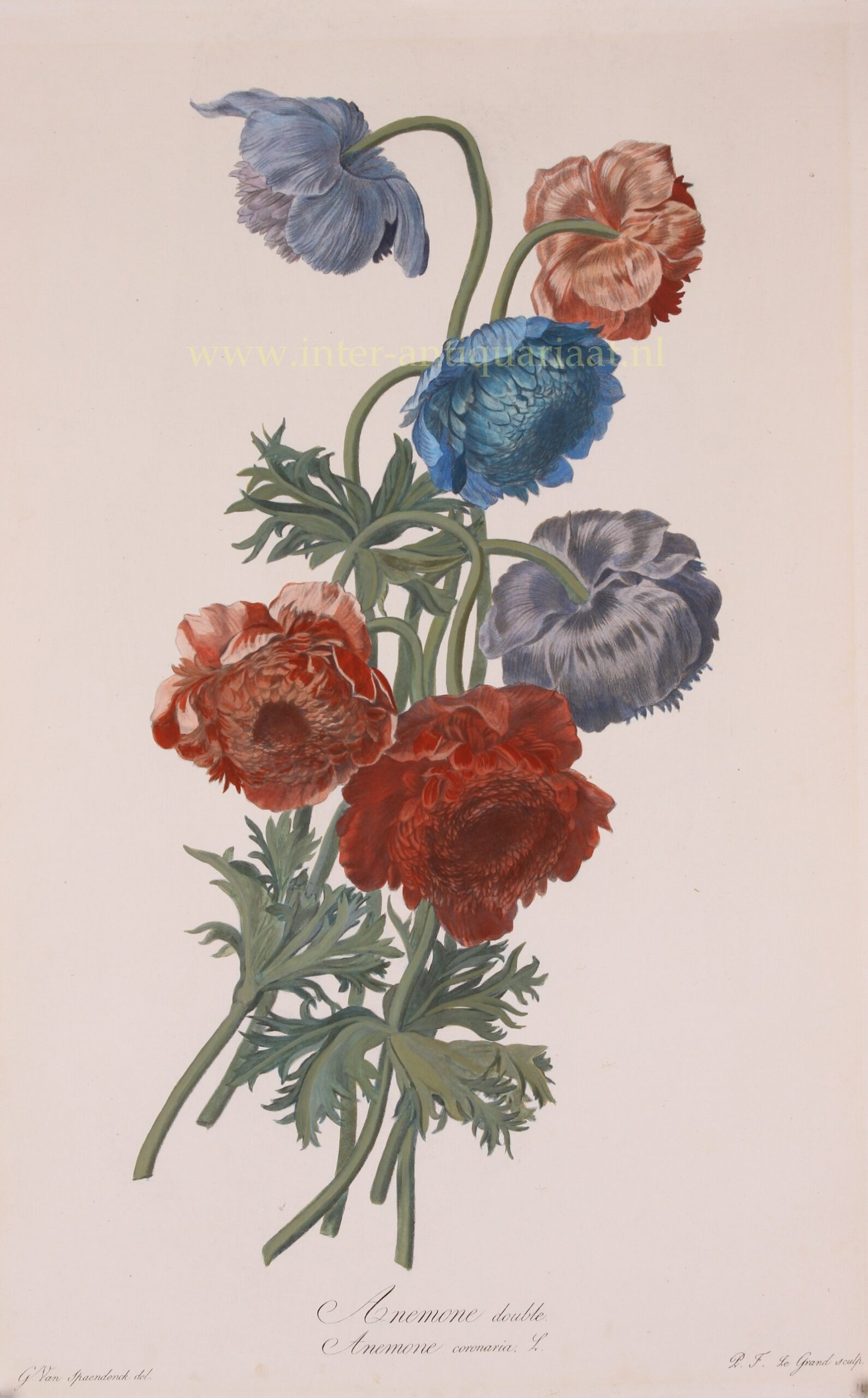“Anemone double – Anemone coronaria “, stipple engraving made by P.F. le Grand after a drawing by Gerard(us) van Spaendonck from the “Fleurs dessinées d’après nature”, published between 1799 and 1801. With original hand colouring. Size (print) approx. 50 x 33 cm.
Anemone coronaria means crown anemone, referring to the central crown of the flower, evoking regal associations. The Arabic name is shaqa’iq An-Nu’man translated literally as the wounds, or “pieces”, of Nu’man. One possible source of the name traces back to the Sumerian god of food and vegetation, Tammuz, whose Phoenician epithet was “Nea’man”. Tammuz is generally considered to have been drawn into the Greek pantheon as Adonis, who died of his wounds while hunting wild boar. The deity is transformed into a flower, stained by the blood of Adonis. Tammuz’s Phoenician epithet “Nea’man” is believed to be both the source of “an-Nu’man” in Arabic which came through Syriac, and of “anemone” which came through Greek.
In Hebrew, the anemone is kalanit metzuya. “Kalanit” comes from the Hebrew word “kala כלה” which means “bride”, “metzuya” means “common.” The kalanit earned its name because of its beauty and majesty, evoking a bride on her wedding day. In 2013 Anemone coronaria was elected as the national flower of the State of Israel. Each year in Israel there is a month-long festival to celebrate the blooming of the red anemones.
Gerard van Spaendonck (1756-1842) studied with decorative painter Willem Jacob Herreyns in Antwerp. In 1769 he moved to Paris, where in 1774 he was appointed miniature painter in the court of Louis XVI. In 1780 he succeeded Madeleine Françoise Basseporte as professor of floral painting at the Jardin des Plantes, and was elected a member of the Académie des beaux-arts shortly afterwards.
Van Spaendonck contributed to over fifty works of Les Vélins du Roi, a famous collection of botanical watercolours owned by French royalty. From 1799 to 1801 he published twenty-four plates as part of his Fleurs Dessinees d’apres Nature (Flowers Drawn from Life), which were high-quality engravings for students of floral painting. Today the Fleurs Dessinees d’apres Nature are considered among the best botanical engravings in the world. Stipple engravings with which one is able to differentiate between different tones of gray, turned out to be highly suitable for depicting botanical details, a method that Van Spaendonck also taught his pupil Pierre-Joseph Redouté.
Like other famous flower painters, Van Spaendonck was also technically perfect: in oil, watercolour, pen or pencil, on any scale. With attention to every minute detail and elegance and sophistication of the composition, he shows his mastery. Like Jan van Huysum, Van Spaendonck understood the zeitgeist and created flower compositions that matched the taste of the public of around 1800. He combined the traditional Dutch way of representing flowers with French sophistication and good taste.
Price: Euro 950,-


